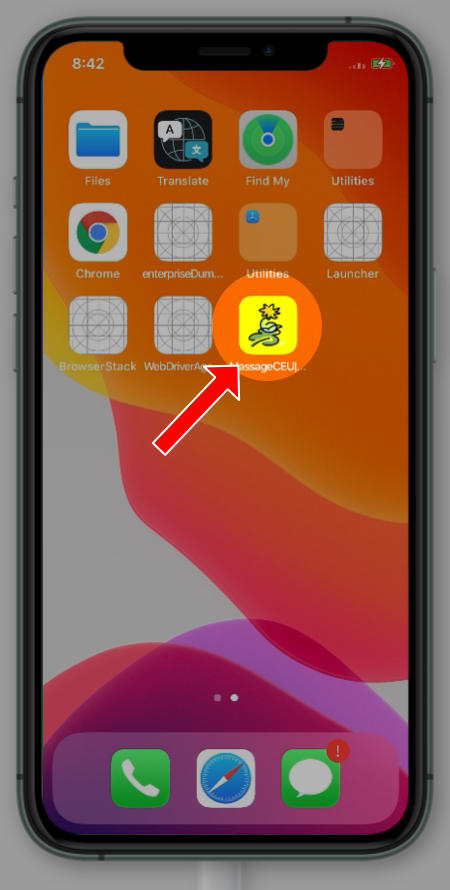

Understanding Sciatica and Its Prevalence
Sciatica conditions afflict approximately forty percent of the US population at some point in their lifetimes, with 1–5% annually reporting sciatica conditions to their doctor. Men and women are affected equally. Fortunately, the vast majority of cases resolve within several weeks without surgical intervention. However, in about a quarter of cases, surgery is necessary. Many patients with clinically significant low back pain experience sciatica conditions in conjunction.
When a client says “I have sciatica,” the meaning can vary. Therefore, understanding the specific type is essential for proper treatment.
Types of Sciatica
True Sciatica
“True Sciatica” features impingement of the sciatic nerve at the lumbar-sacral plexus stemming from the L1 to S1 spinal nerve roots. The pain and symptoms radiate down the posterior lower limb, typically to the plantar foot. This is often called radicular pain, as it radiates toward the foot.
Clinical clues can help a doctor determine which spinal nerve root is involved in sciatica.
- From L1 –L3 nerve roots, sensations felt within the inguinal region and through the upper to mid quadriceps muscle group.
- From L4 nerve root, sensations felt travel to the medial leg-foot, a loss of dorsi-flexion of the ankle is witnessed and there is a reduced knee-jerk reflex.
- From L5 nerve root, there is an inability to extend great toe, and “drop foot” may be witnessed which appears as the foot cannot be lowered slowly upon the ground during gait.
- From SI nerve root, sensations felt travel to the lateral leg-foot, a loss of plantar flexion of the ankle is witnessed and there is a reduced ankle-jerk reflex.
Piriformis Syndrome
Piriformis syndrome features impingement of sciatic nerve either between piriformis and superior gemellus muscles or within the piriformis fibers itself. The pain and symptoms experienced typically travel down the posterior lower limb ending at hamstring and/or popliteal level.
Clinical tests for differentiation:
Two clinical tests can help distinguish piriformis syndrome as opposed to true sciatica.
The first involves stretching the piriformis muscle. If a client’s pain and symptoms exacerbate while piriformis muscle is being stretched, this indicates piriformis syndrome.
The second involves stretching the hamstring muscle group. If a client’s pain and symptoms exacerbate while the hamstrings are being stretched, this indicates true sciatica.
In other words:
- Stretching piriformis muscle → increased pain = Piriformis syndrome.
- Stretching hamstring muscles → increased pain = True Sciatica.
Pseudo-Sciatica
Pseudo-sciatica features impingement of nerve structures elsewhere than previously
mentioned. Commonly superior and inferior gluteal nerves, usually between gluteus
maximus and gluteus medius muscles. Also, the sacro-iliac (SI) joint may involve
compressing upon adjacent nerve fibers. The pain and symptoms experienced may
travel laterally towards the hip, medially towards the groin and/or down the posterior-
lateral leg.
Causes of Sciatica
The most common cause of spinal nerve root impingement with “True Sciatica” involve intervertebral disc injuries. The term slipped disc implies a disc no longer in proper position. This can result if a disc begins bulging or herniates. Typically, with bulging discs there is no ligament damage along the spinal column whereas there is ligament damage with herniated discs.
Additional causes include:
- Lumbar stenosis (narrowing of the spinal canal)
- Damage to pars interarticularis portion of the vertebral bone
- Spondylosis
- Spondylolisthesis
- SI joint dysfunction
- Pregnancy
- Spinal cord injury
- Lumbar-gluteal muscle spasms
Classic Signs and Symptoms
- Lower back/hip pain which becomes persistent and clinically significant.
- Radicular leg pain with pain radiating inferiorly.
- Burning/tingling/numbness sensations which clients may describe as
neuropathy. Burning often indicates nerve involvement. - Leg muscle atrophy and weakness experienced as nerve supply is impeded.
- Chronic gluteal pain becoming persistent and clinically significant.
- Scoliosis which develops later in life as myofascial imbalances exacerbate over
time, causing certain paraspinal muscles to hold great tension and cause spinal
nerve impingements. - Digestive, urinary and reproductive organ challenges occurring as nerve supply
is impeded towards various organs. - Sacro-Iliac (SI) Joint Dysfunction which may result in aforementioned symptoms.
Complications may occur in conjunction with sciatica conditions. Cauda equina
syndrome causing pain, weakness, and incontinence may become a factor for sciatica patients. Spinal bone fractures may complicate healing. Severe muscle weakness due to a lack of nerve supply to muscles may hinder healing. Tumors and masses within the
lumbar and abdominal regions may need to be addressed and removed.
Treatment Options for Sciatica
Non-Surgical Treatments
There are many non-surgical treatments available, which can relieve pain and improve quality of life. For example:
- Spinal injections such as steroids, prolotherapy, lidocaine and Botox can ease and erase symptoms temporarily.
- Nerve blocks seem to last three to six months depending on the patient.
- Nerve ablations using radio frequency waves can also temporarily disengage nerve signals.
- Cryotherapy is often considered more effective than heat treatments with reducing
sciatica symptoms and pain. - Spinal decompression techniques can ease spinal nerve impingement.
- Magnetic therapies involving copper or similar metals to ease pain have shown promise.
- Acupuncture, chiropractic and massage therapies have also eased pain for many people.
- A specialized form of massage called Rolfing aims to realign posture which also eases
nerve impingements. - Specialized yoga routines can be designed for sciatica patients.
Surgical Treatments
If non-surgical treatments fail, several surgical options exist:
- The open discectomy removes part or a portion of a herniated disc which may be pinching a spinal nerve. A newer version of this procedure called a microdiscectomy offers shorter recovery time.
- A laminectomy removes the lamina portion of vertebral bone.
- A foraminotomy widens the foramen spaces in which spinal nerves travel through.
- Spinal fusion surgery fuses spinal bones together to prevent spinal nerve impingement.
Best Practices for Massage Therapists Working with Sciatica Patients
A massage therapist working with sciatica patients needs to consider these three
questions (with follow-up questions) when facilitating treatment plans:
- Which symptoms are experienced, how do you describe the pain and symptoms
felt and where do you feel these symptoms? - Which movements and activities make the pain and symptoms better or worse?
- Which treatments have you employed thus far for your condition, and which
improve your condition the most?
Once the massage therapist determines the nature of the pain and symptoms
experienced, pain relieving measures can be employed. These measures include:
- Hydrotherapy (heat/cold)
- Changing client positioning upon the table
- Slowing the cadence and pace of strokes delivered
- Breathwork integration
- Mindful holding and compression
- Essential oils
Additionally, employing massage modalities and techniques to create space within the lumbar spine and sacral base will be useful additions to normal massage practice.
Working with sciatica patients requires a thorough understanding of the different types, symptoms, and underlying causes of sciatic nerve pain. By combining clinical knowledge with specialized massage techniques, therapists can provide meaningful relief and improve mobility, comfort, and overall quality of life. Incorporating non-surgical interventions, patient education, and safe exercise or stretching routines enhances treatment outcomes. While some cases may require medical or surgical interventions, a massage therapist’s informed approach can complement these treatments, empowering patients to manage pain more effectively. By staying current with best practices and continuing education in sciatica treatment, massage professionals can play a vital role in the holistic care of their clients.











